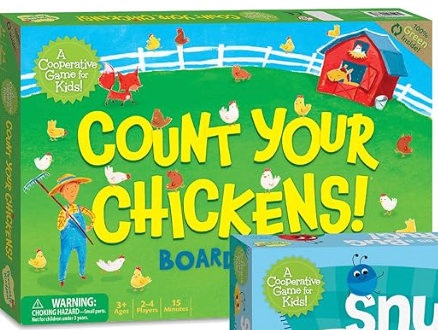How to Use Let’s Go Fishing as a Therapeutic Tool for Kids
- Kristin Lovato
- Aug 30, 2024
- 4 min read
Let’s Go Fishing is a classic game that brings joy to kids and families with its simple, fun gameplay. But beyond just being an entertaining activity, this game can also serve as an incredibly effective therapeutic tool. Whether you’re a parent, therapist, or educator, Let’s Go Fishing offers opportunities for children to develop essential skills in a playful and engaging way.

In this post, we’ll explore how to use this game to help kids build fine motor skills, practice emotional regulation, improve social interaction, and even develop problem-solving strategies. Ready to dive in? Let’s get started!
What is Let’s Go Fishing?
Let’s Go Fishing is a game where players use tiny fishing poles to catch colorful fish as they rotate on a moving board. The objective is to catch as many fish as possible before the game ends. While it seems like a simple concept, it requires precision, patience, and coordination—making it an ideal tool for therapeutic play.
1. Developing Fine Motor Skills
One of the primary benefits of Let’s Go Fishing is that it helps kids develop their fine motor skills. The small fishing poles require players to use their fingers and hands in a controlled and precise way to catch the fish. This strengthens hand-eye coordination and builds the dexterity needed for activities like writing, drawing, and using utensils.
Therapeutic Tip: Encourage kids to focus on how they hold the fishing pole and guide them to make small, controlled movements. This can be particularly beneficial for children who need to improve their fine motor skills or those who struggle with activities that require detailed hand movements.
2. Practicing Patience and Emotional Regulation
Catching those wriggling fish isn’t always easy! As kids play, they may experience frustration or impatience, especially if they have trouble catching a fish right away. This makes Let’s Go Fishing a great way to work on emotional regulation.
Therapeutic Tip: Use moments of frustration as opportunities to teach kids about managing their emotions. Encourage them to take deep breaths, stay calm, and keep trying. This helps them learn that patience and perseverance are key to success, both in the game and in real life.
3. Promoting Social Skills and Turn-Taking
Let’s Go Fishing is a multiplayer game, which makes it perfect for practicing social skills like turn-taking and playing cooperatively. Kids need to wait their turn, respect others’ space, and communicate with their fellow players. This is especially helpful for children who need to work on social interaction or struggle with sharing and teamwork.
Therapeutic Tip: Add a twist by encouraging kids to give compliments to their teammates after each round. For example, they might say, “Great job catching that fish!” or “You did really well on your turn!” This fosters positive communication and helps create a supportive environment.
4. Encouraging Problem-Solving Skills
As the game progresses, kids will face challenges—some fish are more difficult to catch than others, and the rotating board adds an extra layer of complexity. These challenges provide an excellent opportunity to develop problem-solving skills.
Therapeutic Tip: Ask kids to think about their strategy. Questions like “What’s your plan for catching the next fish?” or “How can you adjust your approach?” encourage them to think critically and make adjustments when something isn’t working. This promotes flexible thinking and perseverance.
5. Creating a Positive, Engaging Environment
The beauty of Let’s Go Fishing is that it allows for therapy to happen in a fun and relaxed environment. Kids are often more receptive to learning and skill-building when they’re engaged in play. This game keeps them entertained while also helping them develop valuable skills that can be transferred to other areas of life.
Making the Most of Let’s Go Fishing in Therapy and at Home
To make Let’s Go Fishing a more therapeutic experience, here are a few extra tips:
Modify the rules: Adjust the rules to fit your therapeutic goals. For example, you could have kids catch fish with their non-dominant hand to work on bilateral coordination or have them pause between turns to practice mindfulness.
Use reflection questions: After the game, ask kids to reflect on their experience. Questions like “What was the hardest part for you?” or “How did you stay calm when you couldn’t catch a fish?” can help them process their emotions and learn from the experience.
Encourage positive reinforcement: Celebrate every effort, whether successful or not. Positive reinforcement helps build self-esteem and encourages kids to keep trying, even when things get tough.
Let’s Go Fishing isn’t just a simple game—it’s a powerful therapeutic tool that can help kids develop essential skills in a fun and engaging way. From fine motor development to emotional regulation and social interaction, this classic game offers countless opportunities for growth. Whether you’re using it in therapy sessions or as part of your family’s game night, you can make Let’s Go Fishing a valuable part of your child’s development.
Have you tried using games like Let’s Go Fishing in a therapeutic context? Share your experiences in the comments below, and let’s continue the conversation about the power of play in child development!
Here's the link to get yours: https://amzn.to/3yXpU20
Watch the TikTok on the game: https://www.tiktok.com/@inspiredhealthfit/video/7409006522329566495
This post has affiliate links



댓글